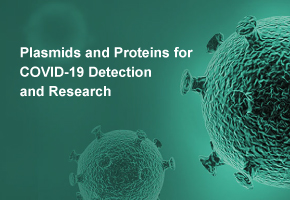What is Golden gate assembly?
Overview
of Golden Gate Cloning
The Golden Gate cloning is an in
vitro molecular cloning method that is based on the enzymatic capability of
Type IIs restriction enzymes. This methodology enables simultaneous and directional assembly of multiple
DNA fragments in a single-tube reaction.
Different from conventional Type II restriction enzymes, Type IIs restriction enzymes can cut DNA outside of their recognition sites and usually generate 4 bp overhangs. Theoretically, 4*4*4*4=256 kinds of overhang sequences can be generated, which enables designing unique fragments and primers to directionally assemble many fragments simultaneously. Once fragments with the complementary overhangs are generated, they can then be annealed and linked together through the enzymatic activity of T4 DNA ligase. The final, correctly-ligated product no longer contains the Type II restriction enzyme recognition sites; meaning that the reaction is essentially irreversible (Figure 1).
Applications
and Advantages of Golden Gate Cloning
A key application of Golden Gate cloning is assembly of DNA fragments of up to 10
parts. Although recent efforts by NEB in optimizing the fidelity of T4 DNA
ligase along with using an improved version of Type IIS restriction enzymes, promise successful one-time assembly of
20+ fragments. This
methodology can also be used
to construct plasmid libraries and offers many advantages, including:
1. Simultaneous and directional assembly of
multiple
fragments in one reaction;
2. Scarless assembly since Type IIs
restriction enzymes can cut DNA outside of their recognition sites;
3. Efficient in saving time and effort since both digestion
and ligation steps are carried out simultaneously in a single-tube reaction with no need to purify insert DNA
fragments and vector.
Tips
from the MolecularCloud™ Team
1. Overhang sequences
can significantly influence the cloning efficiency, using the suggested
overhang (www.biorxiv.org/content/10.1101/322297v1).
2. When
assembling more than one DNA fragment, makes sure your assembled sequence
doesn’t contain any internal sites for Type IIs
restriction enzyme recognition since their presence can reduce the assembly
efficiency.
3. Make sure the
recognition site in your designed primers faces inwards and towards your
to-be-assembled DNA.
4. In the design stage, make sure that each fragment generates
unique and non-palindromic overhangs with no chance of forming a mismatch
ligation product with other overhangs.
5. To assemble a large number of short fragments (>6 fragments, total base lower than 15kb) we recommend the Golden Gate assembly. However, to assemble fewer and longer fragments (<6 fragments, total base more than 15kb), it is best to use the Gibson Assembly.
- Like (2)
- Reply
-
Share
About Us · User Accounts and Benefits · Privacy Policy · Management Center · FAQs
© 2025 MolecularCloud




